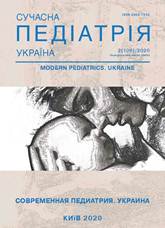Using realtime polymerase chain reaction for taxonomic and quantitative analysis of multicomponent probiotics that are used in pediatrics
Keywords:
real-time polymerase chain reaction, DNA, multicomponent probiotic preparations, microorganismAbstract
The methods for determining the qualitative and quantitative composition of multicomponent probiotics play an important role in their development and investigation. Both taxonomic identification and quantitative analysis of such multisymbiosis components can be significantly accelerated with application of modern methods based on the detection and identification of DNA sequences by polymerase chain reaction (PCR). One of the main requirements for this method is the purity of the isolated DNA and the absence of polymerase chain reaction inhibitors in its content. In the course of study, we developed a method for using polymerase chain reaction in real time for qualitative and quantitative determination of the species composition in multicomponent probiotic preparations containing representatives of 18 species of genera Bifidobacterium, Lactobacillus, Propionibacterium, Lactococcus, Streptococcus and Acetobacter. This method allows rapid and accurate research of samples in the presence of various inhibitors of polymerase chain reaction.
References
Kitam VO, Litovchenko OV, Korobka VL, Shevchenko LM, Shevchenko TV, Yankovskiy DS, Dyment GS, vynakhidnyky; TOV firma «O.D. Prolisok», patentovlasnyk. Sposib yakisnogo ta kilkisnogo vyznachennya vydovogo skladu bagatokomponentnyh bakterialnyh preparative za dopomogoyu specyfichnyh praymeriv metodom polimeraznoi lancyugovoi reakciy realnogo chasu. Patent Ukrainy No. 115774. 2017, Apr 25.
Shirobokov VP, Yankovsky DS, Dyment GS. The method of making probiotic Symbiter forte. Patent No. 34782 Ukraine А61К35/74, А23С9/12, С12N1/20. Application 07.03.2008, published 26.08.2008, Bulletin No.16.
Shirobokov VP, Yankovsky DS, Dyment GS. (2008). Perspective of using bentonite on creation of a new type of multiprobiotics. Sovremennaya Pediatriya. 4(21): 143–154.
Yankovsky DS, Zaets VN, Zvarych VА, Kitam VО, Dyment GS. (2012). Using Polymerase chain reaction for identifying bacterial content of multicomponent probiotics. Sovremennaya pediatriya.6(46): 65–68.
Shirobokov VP, Yankovsky DS, Dyment GS. (2014). Microbes in biogeochemical processes, biosphere evolution, and existence of humankind. Кyiv: FОP Veres ОI : 464.
Shirobokov VP, Yankovsky DS, Dyment GS. (2015). Creation of healthimproving agents of new generation on basis of smectite. Vrachebnoie delo.1(2): 3–9.
Yankovsky DS, Shirobokov VP, Dyment GS. (2011). Integral role of symbiotic microflora in human physiology. Kyiv: Limited company Chervona Ruta-Турс: 169.
Yankovskyy DS, Shyrobokov VP, Dyment GS. (2017). Microbiome. Kyiv: Veres OI: 640.
Blajotta G, Pepe O, Mauriello G, Villani F, Andolfi R. (2002). 16S823S rDNA inter-genic spacer region polymorphism of Lactococcus garvieae, Lactococcus raffinolactis and Lactococcus lactis as revealed by PCR and nucleotide sequence analysis. System. Appl. Microbiol.25: 520–527. https://doi.org/10.1078/07232020260517652; PMid:12583712
Hyuk-Sang Kwon, Eun-Hee Yang, Seung-Hun Lee, Seung-Woo Yeon et al. (2005). Rapid identification of potentially probiotic Bifidobacterium species by multiplex PCR using species8specific primers based on the region extending from 16S rRNA through 23S rRNA. FEMS Microbiology Letters. 250(1): 55–62. https://doi.org/10.1016/j.femsle.2005.06.041; PMid:16039804
Lick S, Keller M, Bockelmann W, Heller KJ. (1996). Rapid identification of Streptococcus thermophilus by primer8specific PCR amplification based on its lacZ gene. System. Appl. Microbiol.19: 74–77. https://doi.org/10.1016/S0723-2020(96)80012-9
Markiewicz L, Biedrzycka E. (2005). Identification of Lactobacillus and Bifidobacterium species with PCR applied to quality control of fermented dairy beverages. Pol J Food Nutr Sci. 14/55(4): 359–365.
Reid G, Gadir AA, Dhir R. (2019). Probiotics: Reiterating What They Are and What They Are Not. Front Microbiol.10: 424. https://doi.org/10.3389/fmicb.2019.00424; PMid:30930863 PMCid:PMC6425910.
Saiki RK, Gelfand DH, Stoffel S, Scharf SJ et al. (1988). Primer-directed enzymatic amplification of DNA with a thermostable DNA polymerase. Science.239: 487–491. https://doi.org/10.1126/science.239.4839.487; PMid:2448875
Schrader C, Schielke A, Ellerbroek L, Johne R. (2012). PCR inhibitors-occurrence, properties and removal. Journal of applied microbiology.113(5): 1014–26. https://doi.org/10.1111/j.1365-2672.2012.05384.x; PMid:22747964
Stinson LF, Boyce MC, Payne MC, Keelan JA. (2019, Jun 04). The Not-so-Sterile Womb: Evidence That the Human Fetus Is Exposed to Bacteria Prior to Birth. Frontiers in Microbiology.10. https://doi.org/10.3389/fmicb.2019.01124; PMid:31231319 PMCid:PMC6558212.
Srutkova D, Spanova A, Spano M, Drab V et al. (2011). Efficiency of PCR-based methods in discriminating Bifidobacterium longum ssp. longum and Bifidobacterium longum ssp. infantis strains of human origin. Journal of Microbiological Methods.87(1): 6–10. https://doi.org/10.1016/j.mimet.2011.06.014; PMid:21756944
Tilsala-Timisjarvi A, Alatossava T. (2001). Caracterization of the 16S-23S and 23S-5S rRNA intergenic spacer regions of dairy propionibacteria and their identification with species-specific primers by PCR. Int J Food Microbiol. 68: 45–52. https://doi.org/10.1016/S0168-1605(01)00462-7
Tokunaga H, Tanaka H, Hashiguchi K, Nagano M et al. (2009). Rapid detection of acetic acid bacteria in the traditional pot-fermented rice vinegar Kurozu. Food Sci. Technol. Res. 15(6): 587–590. https://doi.org/10.3136/fstr.15.587
Yankovsky DS, Shirobokov VP, Dyment GS. (2018). Innovation Technologi es For Human Microbiome Improvement. Sci innov. 14(6): 11–21. https://doi.org/10.15407/scine14.06.011
Yankovsky DS, Shirobokov VP, Dyment GS. (2019). The role of microbiome in the formation of child health (literature review). Modern Pediatrics Ukraine. 5(101): 64–111. https://doi.org/10.15574/SP.2019.101.64.
Downloads
Published
Issue
Section
License
The policy of the Journal “MODERN PEDIATRICS. UKRAINE” is compatible with the vast majority of funders' of open access and self-archiving policies. The journal provides immediate open access route being convinced that everyone – not only scientists - can benefit from research results, and publishes articles exclusively under open access distribution, with a Creative Commons Attribution-Noncommercial 4.0 international license (СС BY-NC).
Authors transfer the copyright to the Journal “MODERN PEDIATRICS. UKRAINE” when the manuscript is accepted for publication. Authors declare that this manuscript has not been published nor is under simultaneous consideration for publication elsewhere. After publication, the articles become freely available on-line to the public.
Readers have the right to use, distribute, and reproduce articles in any medium, provided the articles and the journal are properly cited.
The use of published materials for commercial purposes is strongly prohibited.

